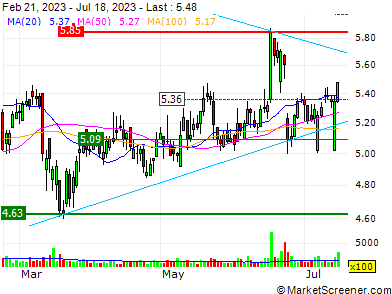Asia Pacific Sees Rising Demand for Managed Services as Cloud Spending Continues to Fall
Demand for traditional managed services in Asia Pacific remained strong
in the second quarter, even as spending on cloud services continued to slide,
according to the latest state-of-the-industry report from Information Services
Group (ISG), a leading global technology research and advisory firm.
The Asia Pacific ISG Index, which measures commercial outsourcing
contracts with annual contract value (ACV) of US $5 million or more, shows
second-quarter ACV for the combined market (both cloud-based XaaS and managed
services) fell 18 percent versus the prior year, to US $4.0 billion, dragged
down by a sharp and continuing decline in the XaaS segment.
ACV for XaaS was down 28 percent for the quarter, to US $2.9 billion,
the lowest such mark since the third quarter of 2020, and the fourth quarter in
a row that the XaaS market has contracted year over year.
Meanwhile, demand for managed services rose significantly, with
second-quarter ACV up 30 percent, to US $1.1 billion, from the prior year. A
total of 62 contracts were awarded in the quarter, down 19.5 percent year over
year, but including two mega deals (contracts with annual value of US $100
million or more), the most in a quarter in four years. Of the deals signed in
the quarter, ACV of restructured contracts and new scope awards was up 45
percent and 21 percent, respectively.
“Enterprises in Asia Pacific are increasing their spending on
traditional IT and business services outsourcing as a lever for cost
optimization in an uncertain economy,” said Scott Bertsch, partner and regional
leader, ISG Asia Pacific “The cloud sector, meanwhile, continues to suffer a
reversal of fortune. Enterprises that scaled up quickly during the pandemic are
now rationalizing their cloud costs and postponing discretionary cloud
spending.”
Within the XaaS segment, infrastructure-as-a-service (IaaS) ACV was down
30 percent, to US $2.5 billion, while software-as-a-service (SaaS) ACV was down
6 percent, to US $410 million.
In managed services, IT outsourcing (ITO) ACV soared 58 percent, to US
$986 million, on the strength of application development and maintenance (ADM),
data center and managed network services. Business process outsourcing (BPO),
meanwhile, declined 53 percent, to US $100.2 million, with ACV up only in
contact center and HR services for the quarter.
From a geographic perspective, demand for managed services was up
significantly in India, Australia-New Zealand and China, while declining in
Japan and Southeast Asia.
Asia Pacific’s combined market fell 19 percent versus the prior year, to
US $8.4 billion, the first time since 2017 the region had a down first half.
Managed services rose 47 percent, to US $2.0 billion, the highest ACV in
a first half since 2014. A total of 119 contracts were awarded, down 4 percent
from the prior-year period. ITO ACV rose 64 percent, to US $1.6 billion, while
BPO was flat, at US $352 million. Spending on managed services in Australia-New
Zealand, the region’s largest geographic market, doubled from the prior year,
while India and China also registered significant growth.
Meanwhile, XaaS spending in the first half fell 29 percent, to US $6.4
billion, as IaaS slumped 31 percent, to US $5.6 billion, and SaaS declined 12
percent, to US $794 million.
2023 Global Forecast
ISG lowered its forecast for XaaS revenue growth in 2023 to 11.5
percent, down 350 basis points from its March forecast, and maintained its
growth forecast for managed services at 5 percent.
“In determining our forecast, we considered macro uncertainties that
have delayed decision-making and tightened discretionary spending, thus slowing
movement in the pipeline,” said Bertsch. “We also noted interest rates have
risen more in the past year than in the previous 30, which may dampen big
infrastructure investments. But the difficult comps will soon be behind us, and
excitement is growing around generative AI. That could provide a tailwind for
cloud services.”


































Leave A Comment